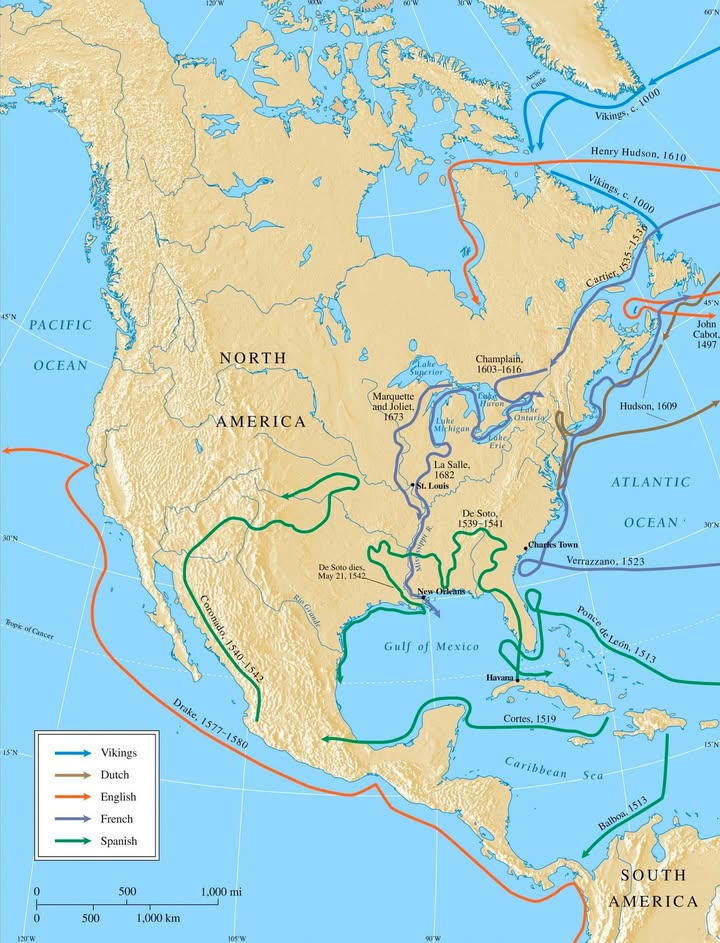Map by Reddit user giuliomagnifico
Long before Columbus sailed the ocean blue in 1492, hardy Viking explorers were already making landfall on North American shores.
This fascinating map reveals the true timeline of European encounters with the New World, and the results might surprise you.
The Vikings: America’s Forgotten First Visitors
The purple lines on this map tell an incredible story.
Nearly 500 years before Columbus, Viking expeditions led by brave souls like Leif Erikson were navigating treacherous northern waters to reach what they called Vinland.
These Norse adventurers established temporary settlements around 1000 CE, making them the first confirmed Europeans to set foot on American soil.
What makes this even more remarkable is that they accomplished this feat using nothing more than their legendary longships and stellar navigation skills. No fancy instruments, no royal backing, just pure Viking determination and seamanship.
The Spanish Conquest Begins
Fast forward to the early 1500s, and we see the green lines marking Spanish expeditions that would reshape entire continents.
Hernán Cortés conquered the mighty Aztec Empire in 1519, while other Spanish conquistadors carved paths through Mexico, Central America, and into South America. These weren’t just exploration missions; they were the beginning of a colonial empire that would dominate the Americas for centuries.
The Spanish approach was vastly different from the Vikings. Where Norse explorers came in small groups seeking new lands, the Spanish arrived with armies, diseases, and an agenda for permanent conquest and conversion.
Northern Routes and Riches
The map’s brown and orange lines reveal how Dutch and English explorers took different approaches, focusing heavily on northern passages and trade opportunities.
Henry Hudson’s 1610 expedition and the various English ventures into what would become Canada show a pattern of seeking the elusive Northwest Passage while establishing profitable fur trading relationships with indigenous peoples.
These northern expeditions were less about conquest and more about commerce, leading to very different colonial relationships and outcomes compared to the Spanish experience further south.
Why This Map Matters Today
Understanding this timeline helps us appreciate that European contact with the Americas wasn’t a single moment in 1492, but rather a complex, centuries-long process involving multiple cultures with vastly different goals and methods. Each colored line represents thousands of individual stories of adventure, conflict, cooperation, and cultural exchange.
The next time someone mentions Columbus “discovering” America, you’ll know there’s a much richer, more complex story spanning nearly a millennium of European-American encounters.
Help us out by sharing this map:
